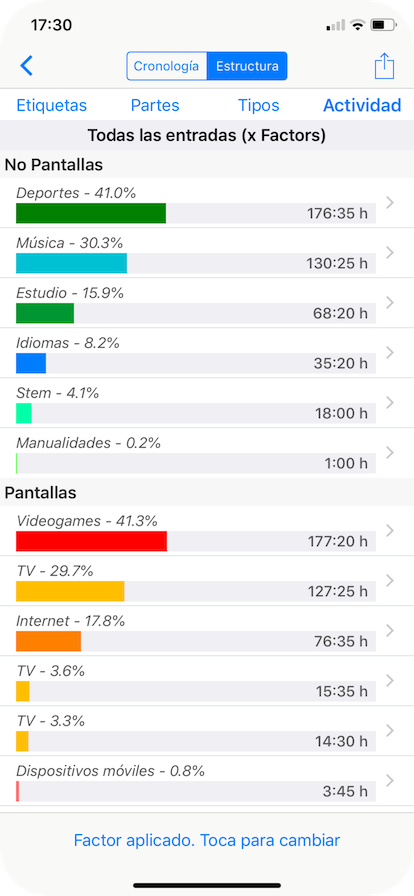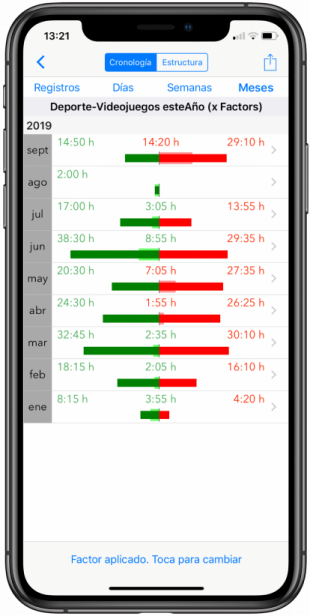
Usage strategies
Our application ScreensDo, Healthy Children allows us to register the time our children spend in activities, classifying them into GREEN activities (not screens) and RED activities (screens), in order to compare them, and verify that the first ones balance to the second ones.
Normally, red activities will be activities that our children tend to do naturally as soon as they get into the "I'm bored" mode, since they do not require effort for them and they also are entertaining.
The green activities will be those that we, as parents or tutors, want to strengthen. Normally they require effort from our children: sports, studying, reading books, going out to the mountains, etc.
As a suggestion, we present some of the activities that we can try to balance, as a strategy to achieve our goals.
Strategy 1. Promoting sports activities
To motivate our children to do some sport activities: Basketball, Skating, Karate, ... we can create a green color activity called SPORTS, and create to compare it with another red activity called VIDEO GAMES (it is usually our children's favorite activity).
Setting a main goal
- Weekly (or monthly), the hours of video games will be less than the hours dedicated to sports activities.
With this compromise of balance, between the hours dedicated to some sport versus the hours dedicated to video games, it is possible to motivate our child to stay in the practice of some physical activity, in order to reduce the hours with consoles, or watching their favorite YouTuber. Our personal experience showed us that we have avoided many hours of fruitless discussions simply by saying, "You decide, but if you don't have hours of sport, you won't have hours of video games."
Supplementary goals
- For school period, on weekdays you can only play video games for a maximum of 30 minutes per day.
This commitment can help our children to assume that on weekdays the time of video games will be limited, regardless of the time spent on sports activities. They will need time for homework or play a musical instrument.
An alternative to the previous complementary goal would be to let the child play video games during the week only if the school performance is good:
- During the school period, from Monday to Thursday, video games CANNOT be played. If the grades are good, you can play 30 minutes a day as a prize, and will not count on the weekly / monthly balance.
This is possible due to the existence of a Factor multiplier of the duration of the activities (it must be activated in the Settings Screen of the application) that allows us to visualize the graphs of the reports with the Duration (h: m) entered in each activity, or with the value obtained from multiplying the Duration (h: m) entered by the selected "Factor".
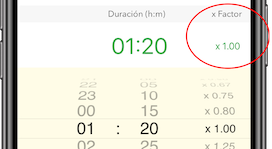
In the previous complementary objective, the duration of the activities should have a Factor value 1.0 in all the activities, except in those that are considered a prize, where we will use a Factor equal to 0.0, so that when creating the report with the Applied Factor, these activities would contribute 0 minutes.
The duration multiplier Factor also allows us to find a balance between activities that do not balance 1 hour to 1 hour.
For example, if we want to play 2 hours video games for every 3 hours of sport, we can use a 1.0 factor in sport activities, and a factor of 3/2 = 1.50 in the video game factor. When we will look at the reports with the Applied Factor, hours of video games will valued 1.5 times more, and generate a null difference when they are balanced with those of sport.
Promoting study and reading.
To motivate our children to devote part of their time to study, to do homework or just to read a book, we can create the corresponding green activity called STUDY , and find their balance with another red screen activity, for example TELEVISION , which it is ussually the activity they choose when they don't want to read books or they get tired of studying.
Setting a main goal
- Weekly (or monthly), television hours will be less than hours spent studying, doing homework or reading books.
With this commitment to balance, between the hours spent studying or reading versus the hours spent watching television, we can incorporate the habit of study and reading into the child's activities.
Supplementary goals
- Every day a minimum of 15-30 minutes will be devoted to reading a book.
This commitment can help us to acquire the reading habit. This commitment can be complemented using limits for different TYPES of activities (Study -School Tasks, Study-Reading, Study-Crafts), or even with activated TAGS (Study-Reading-in English, Study-Reading-in Spanish, etc).
Promoting Non-Screen activities against the use of Screens
It is possible that at the same time we promote activities such as SPORTS and STUDY, in front of activities such as watching TV or playing VIDEOGAMES, we want to find a global balance between time in activities with screens and activities without screens. To do this we must define several activities with different shades of green such as SPORT, STUDY, MUSIC, etc. and compare them with the set of activities of different shades of red such as VIDEO GAMES, TELEVISION, INTERNET, etc.
Setting a main goal
- Weekly (or monthly), screen hours will be less than non-screen hours.
With this compromise of balance, we can regulate that the use of screens does not reduce the time for other activities.
Report views for a set of activities
Pie chart
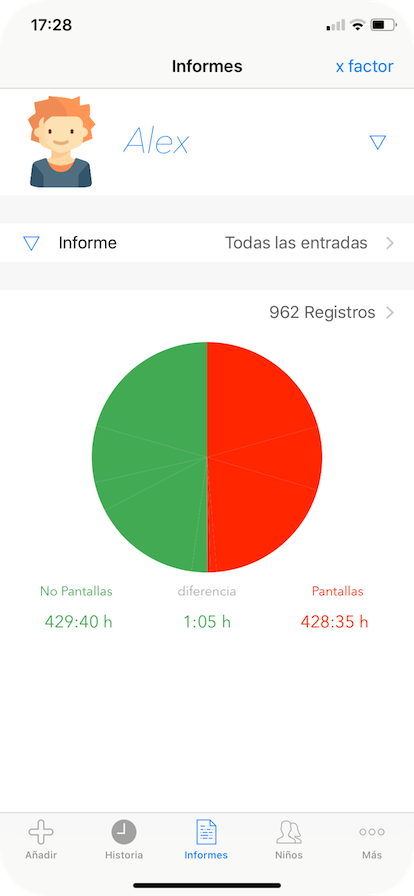
Cronology: Monthly
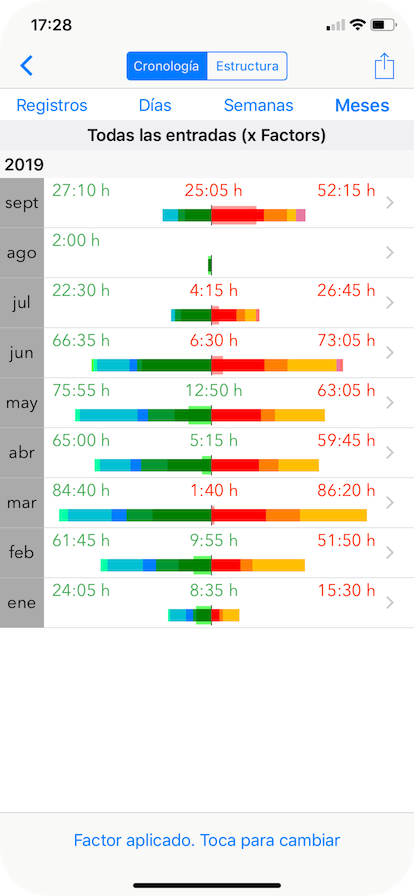
Structure: Activities
